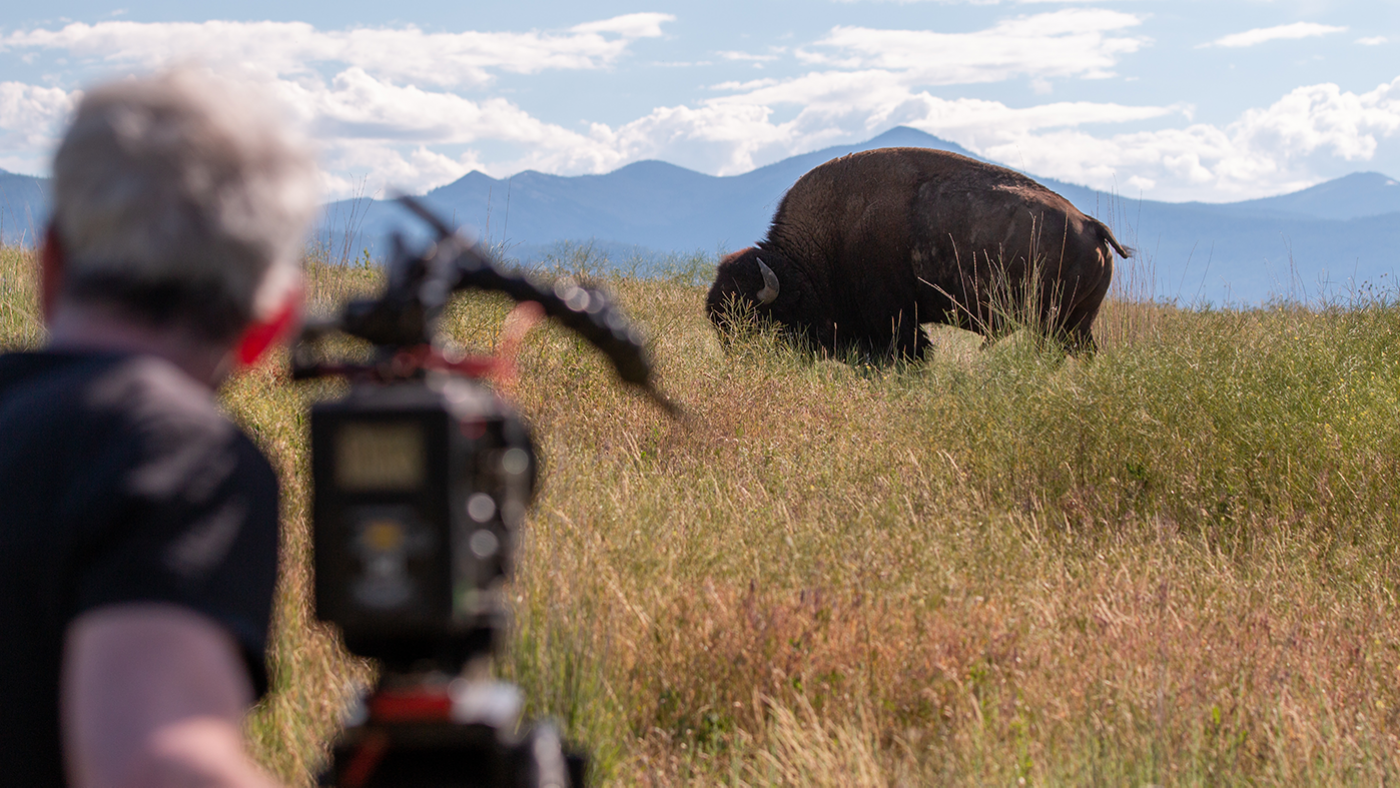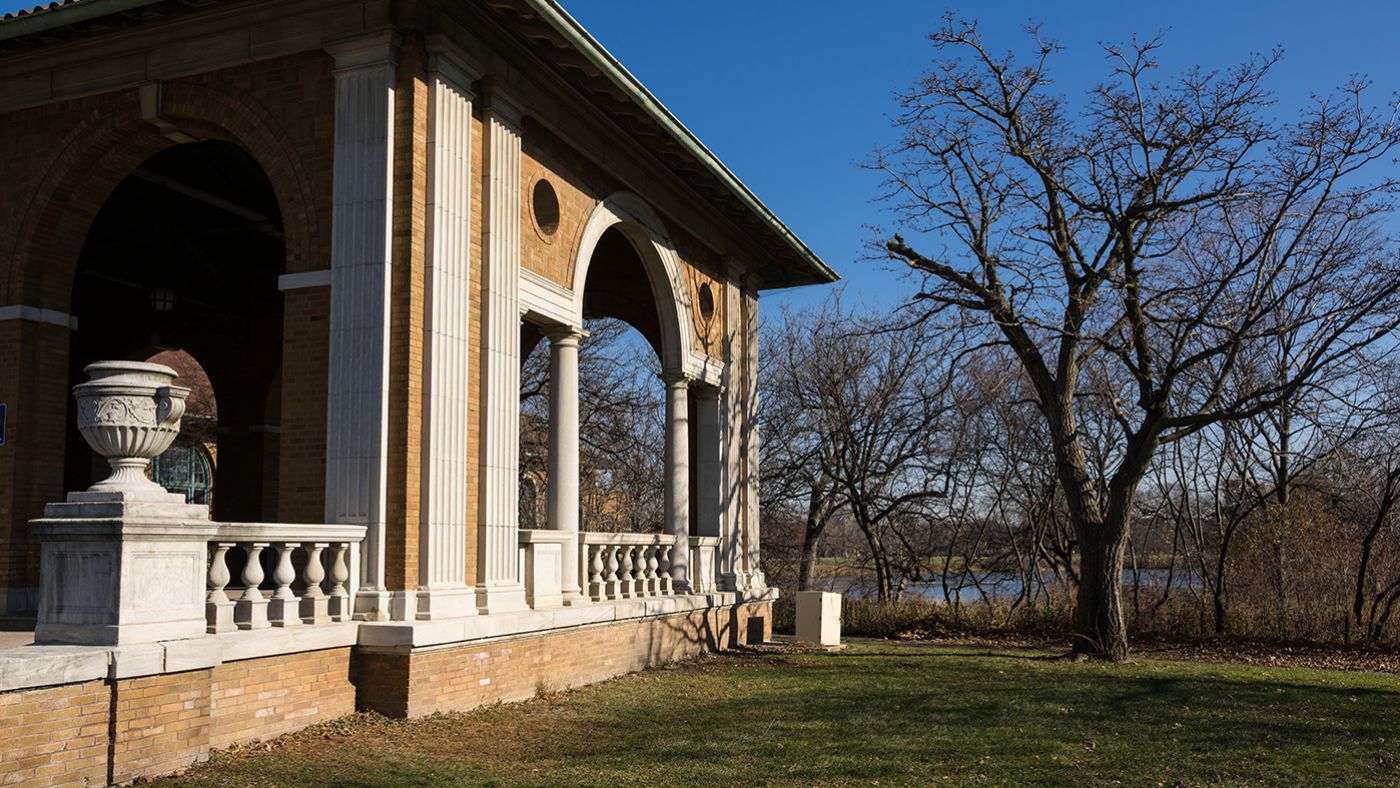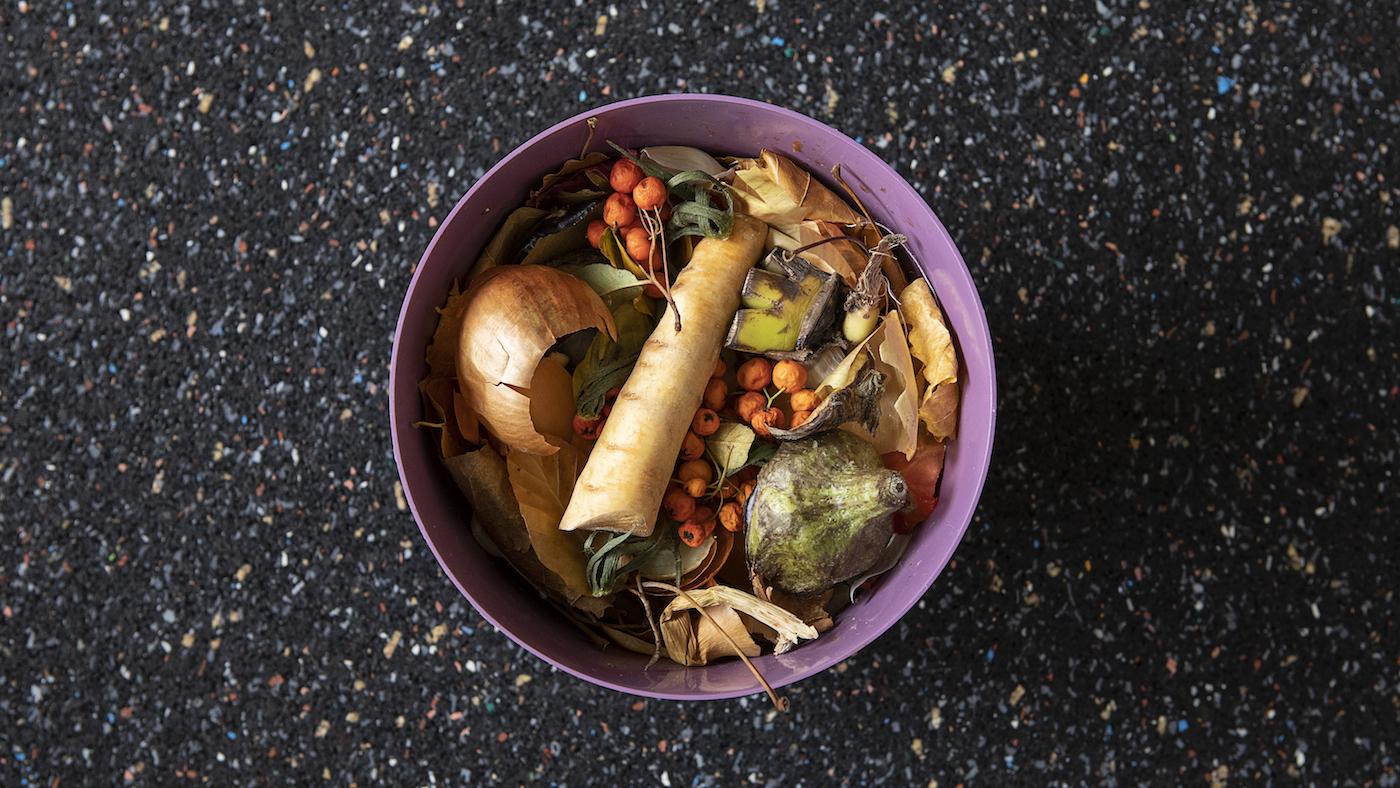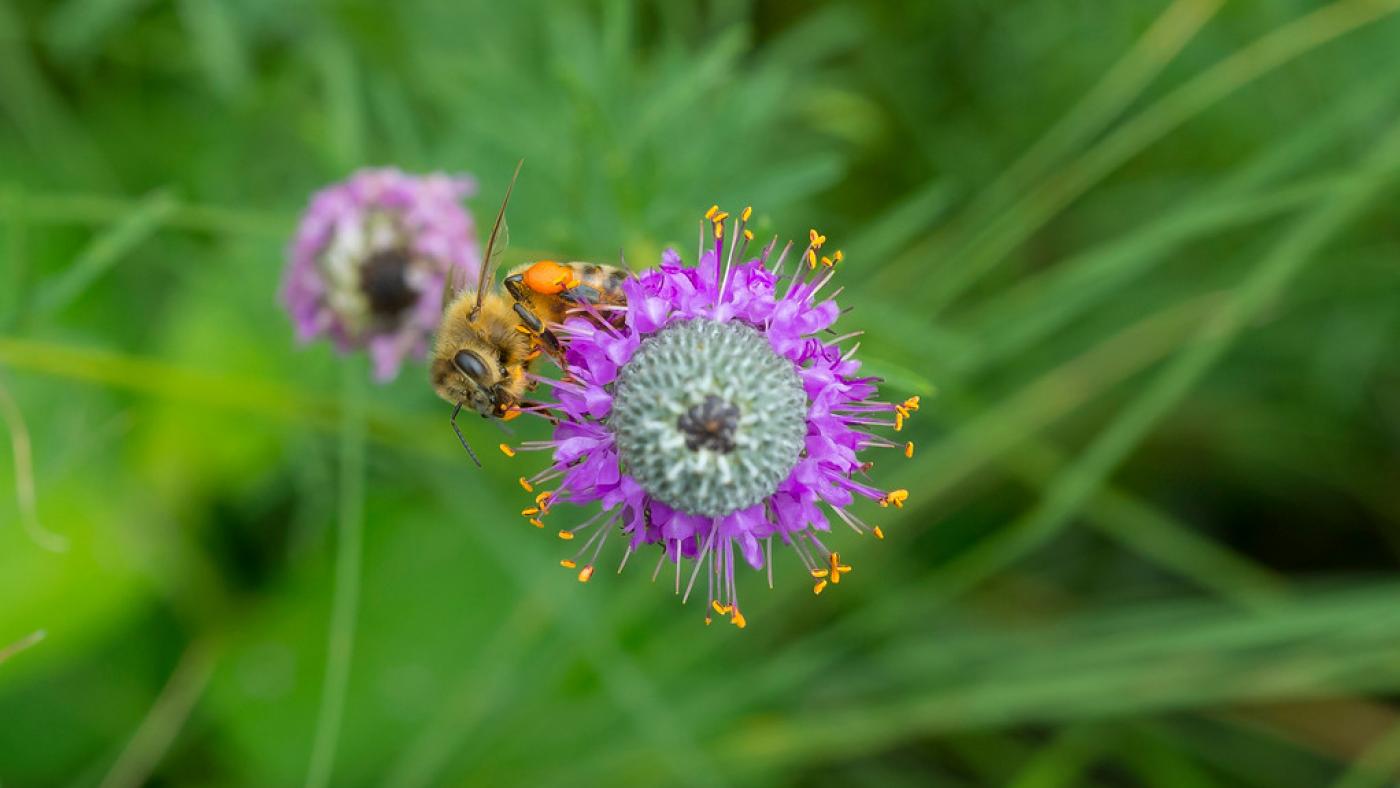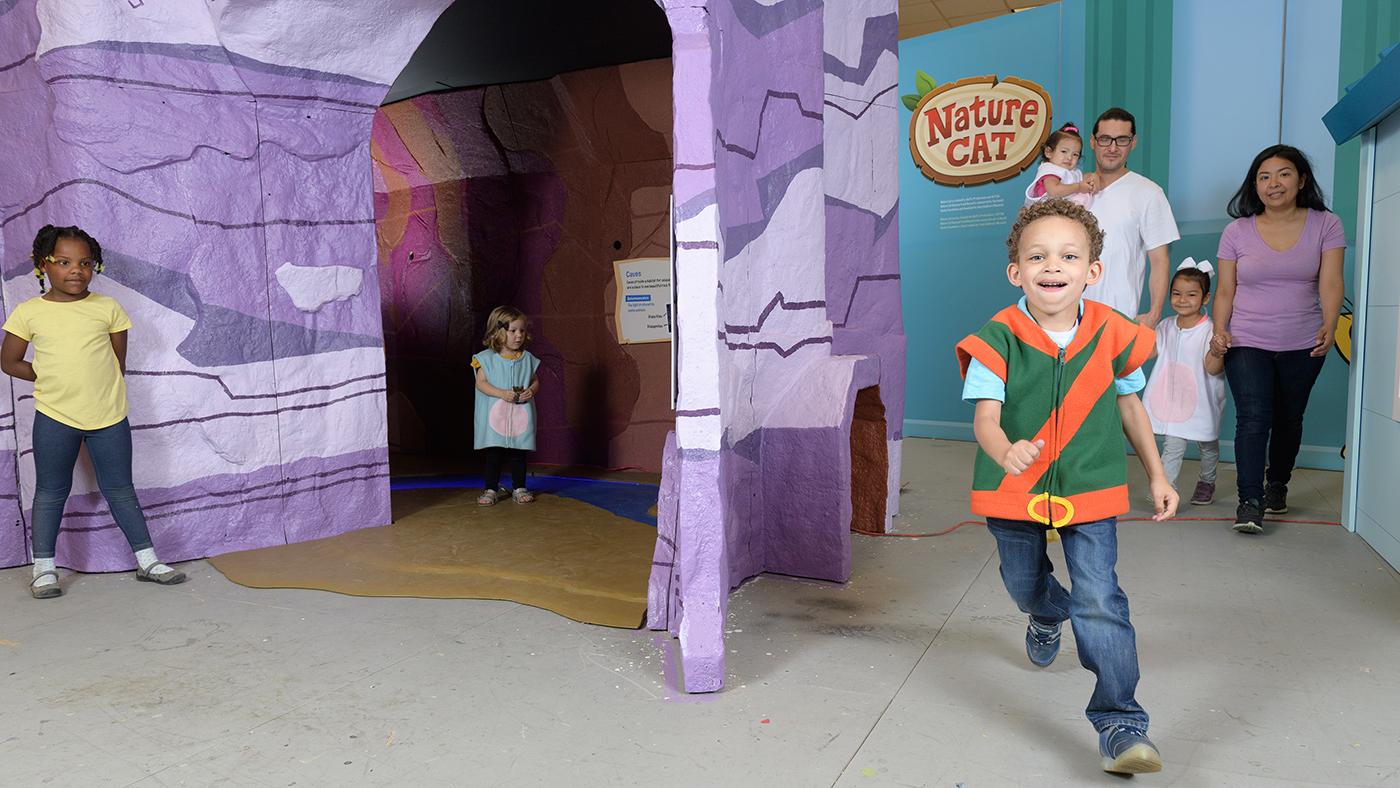Telling a Story of a Tree's Life Through Bonsai
Daniel Hautzinger
May 11, 2018
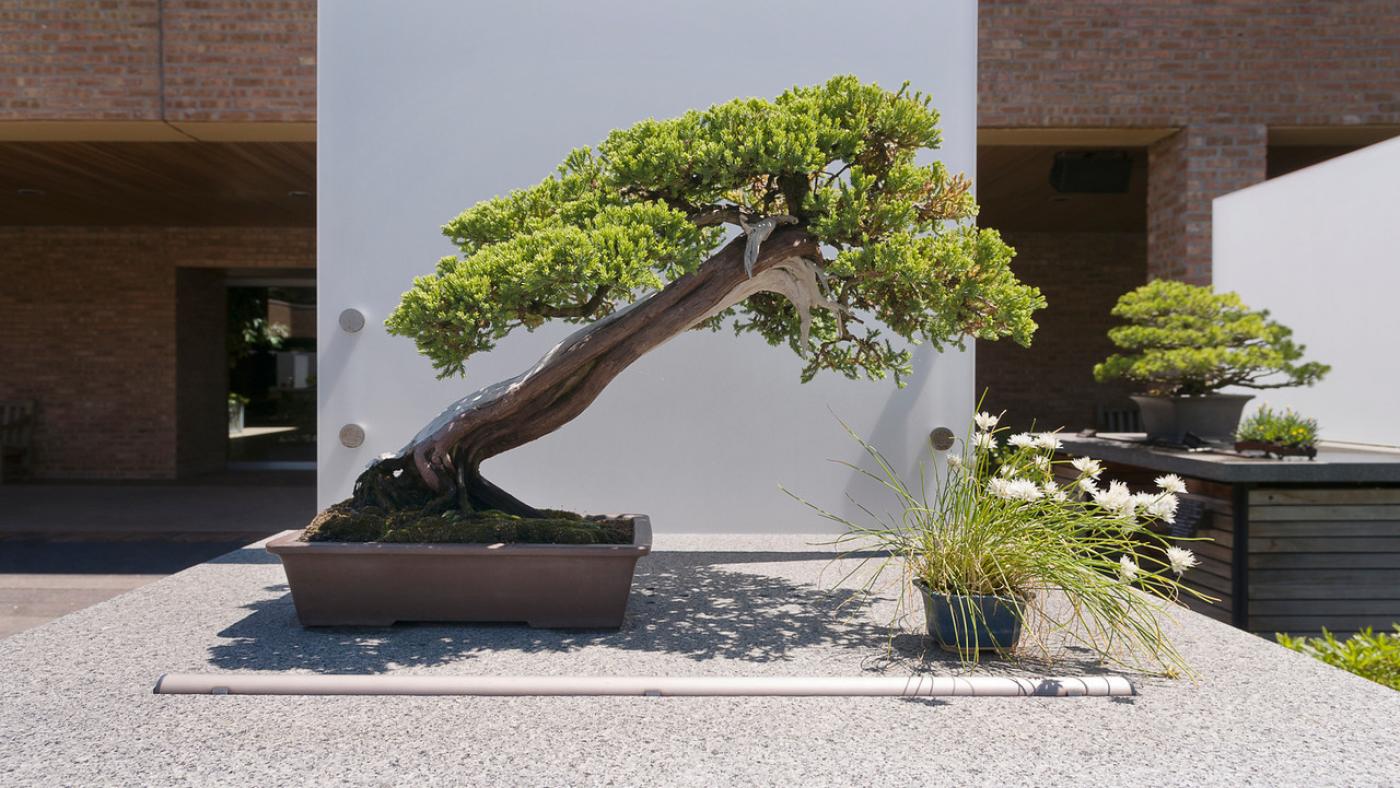
“When you’re displaying a bonsai, you’re telling a story of the tree’s life,” says Chris Baker, the Chicago Botanic Garden’s curator of bonsai. “The artist, through the tree, is telling a story of what they imagine this tree’s life has been like.” On Saturday, May 12 – World Bonsai Day – from 11:00 am to 3:00 pm, Baker leads a tour of the Garden’s bonsai collection and demonstrates some of the training and planting techniques involved with caring for the small, exquisitely styled trees. Meanwhile, the Midwest Bonsai Society Spring Show will be taking place at the Garden all weekend for people who want to browse more bonsai or purchase them.
“Bonsai” literally translates to “planted in a container,” but that makes the Japanese art form sound much simpler than it actually is. Training trees to grow in a small container and look refined and beautiful requires the pruning of roots and foliage, the shaping of branches with copper or aluminum wires, and the careful use of water and fertilizer to encourage different types of growth, Baker says. And obtaining certain characteristics in a bonsai can be at odds with keeping it healthy; for instance, thick, woody roots visible above the dirt give an attractive, aged look, but the tree needs wiry feeder roots below the surface, because they absorb oxygen and minerals.
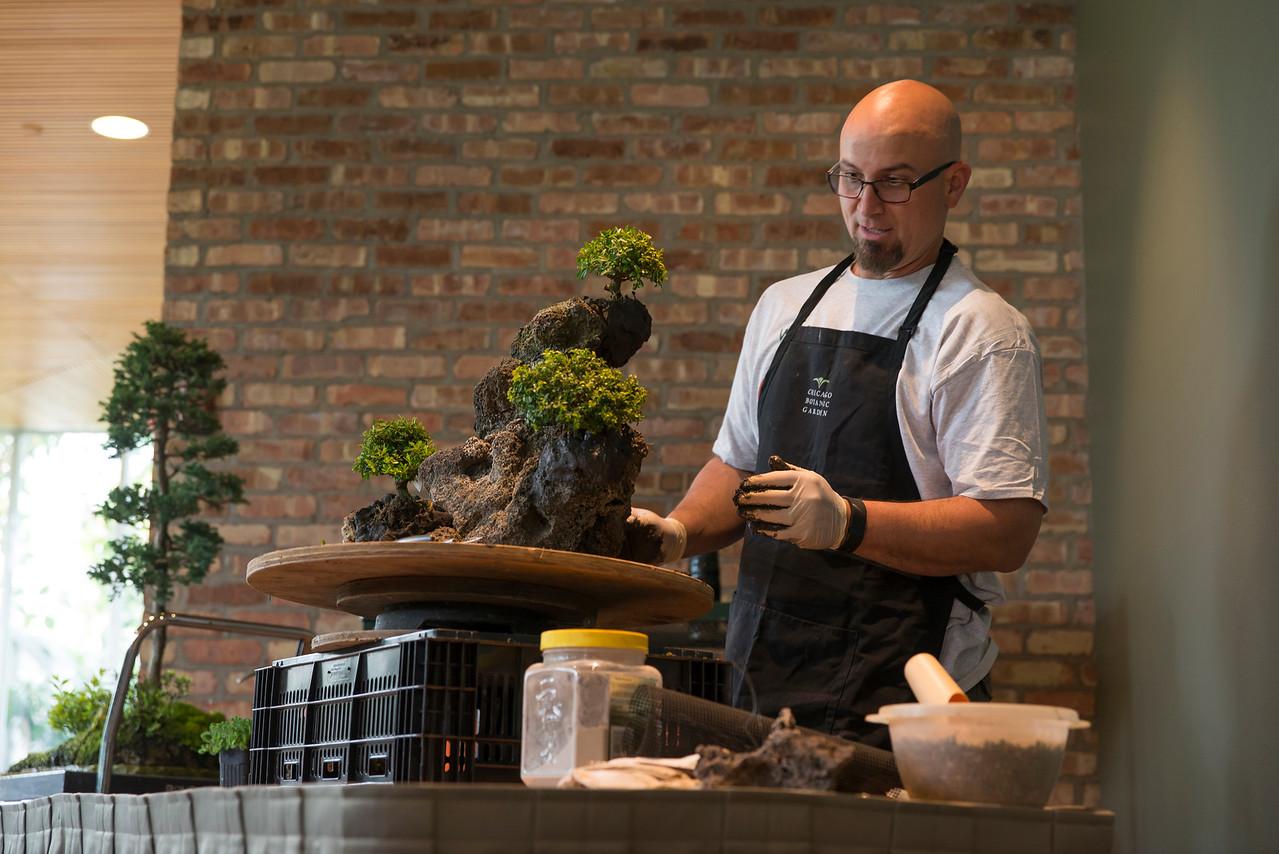 Bonsai are trained through root and foliage pruning, the use of wires, and careful watering and fertilizer use, says Chris Baker. Photo: Chicago Botanic Photos
Bonsai are trained through root and foliage pruning, the use of wires, and careful watering and fertilizer use, says Chris Baker. Photo: Chicago Botanic Photos
There are several ways to start a bonsai. Planting from seed is probably the least common, given the amount of time it takes for a tree to grow to be displayable. Much more common is to start a bonsai from a cutting, from nursery stock, or from a collected tree found in the wild – this last is called “yamadori,” or mountain-collected.
Age, or at least the appearance of age, is a prized attribute in bonsai, so hoary yamadori specimens are especially valuable. As Baker says, “With yamadori, Mother Nature did my work for me, and she’s way better than I am.” Some of the Botanic Garden’s trees have been grown as bonsai for upwards of one hundred years, while their oldest bonsai comes from a limber pine estimated to be 600 to one thousand years old, though it was only collected as a bonsai in 1980. The Garden currently has around 285 bonsai, with some 90 that are ready to be displayed.
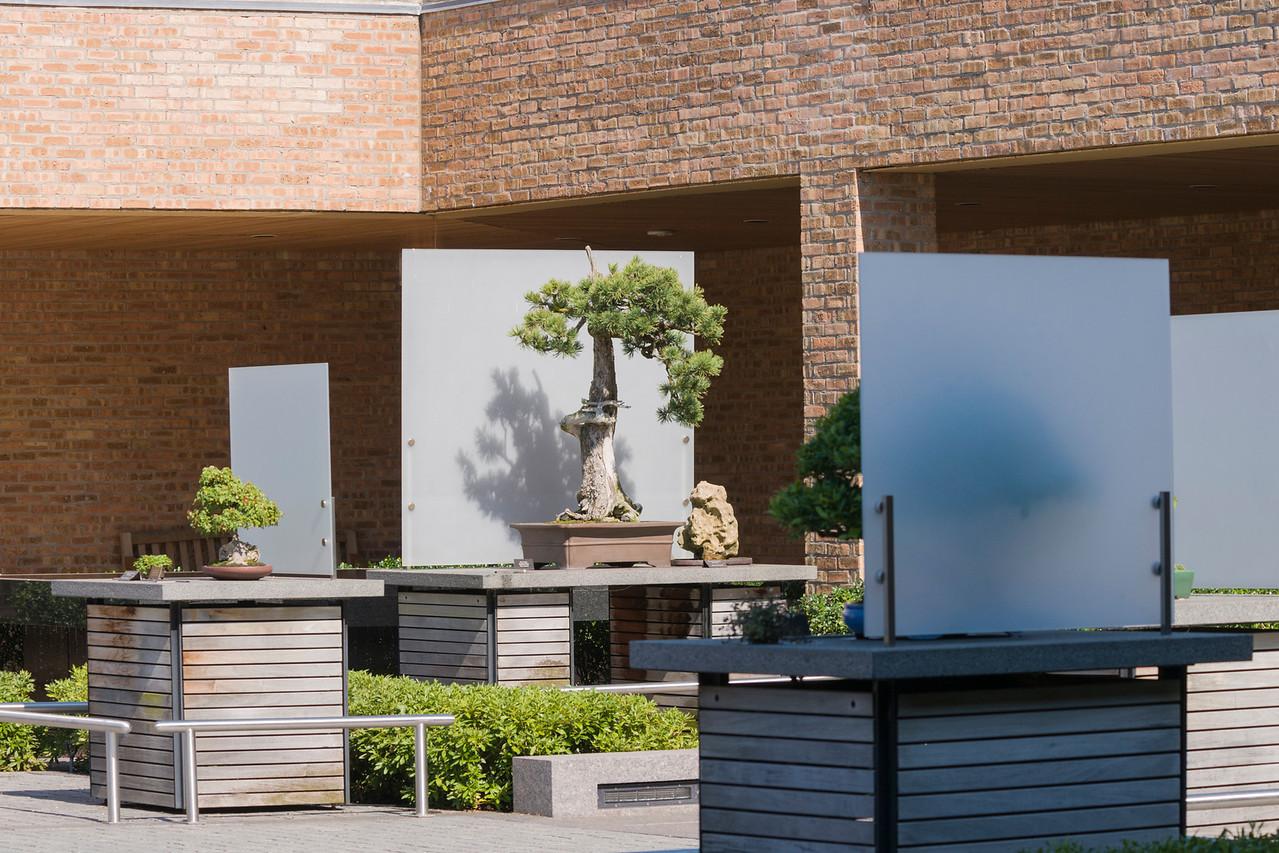 The Chicago Botanic Garden's oldest bonsai is this limber pine, which came from a tree estimated at 600-1,000 years old. Photo: Chicago Botanic Photos
The Chicago Botanic Garden's oldest bonsai is this limber pine, which came from a tree estimated at 600-1,000 years old. Photo: Chicago Botanic Photos
That limber pine is relatively tall for a bonsai, pushing a couple feet, but one of Baker’s favorites is even bigger: a bald cypress that was probably twenty to thirty feet before it was collected from the Everglades. It is complemented by a small container of dwarf irises, which grow near or underneath it in the wild.
One approach to bonsai is to make them appear as much like a regular-sized tree as possible, to recreate in miniature a tree from nature. This is similar to the goals of Penjing, the Chinese art form that bonsai evolved from, which recreates an entire landscape and can include small figurines, water, and rocks. Bonsai are sometimes paired with rocks – suiseki is the Japanese art of admiring rocks that resemble landscapes or natural things – but the pairing is not an integral part of the bonsai.
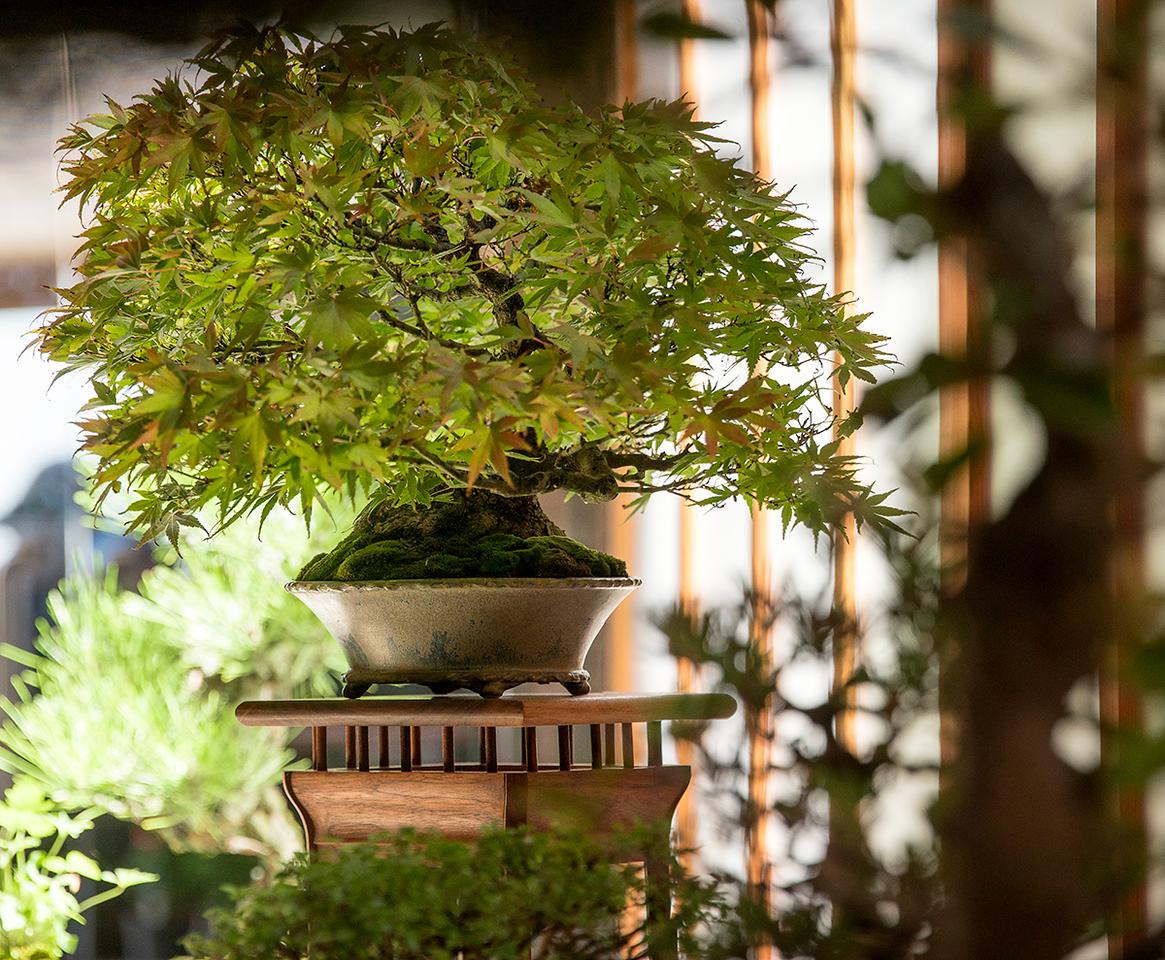 A bonsai's pot is incredibly important, and should accentuate or emphasize aspects of the tree. Photo: Chicago Botanic Photos
A bonsai's pot is incredibly important, and should accentuate or emphasize aspects of the tree. Photo: Chicago Botanic Photos
The pot a bonsai is in, however, can make or break the beauty of the display. “Choosing a pot-tree combination is almost a whole discipline in itself,” Baker explains. “Everything we do in bonsai is geared towards making the tree look better, so you want to pick a container that emphasizes movement or color, that accentuates the tree. The right pot can really elevate a tree.”
For instance, you would not put an ancient Japanese bonsai in a new American pot; you want the pot to share the tree’s patina of age. At the Botanic Garden, Baker tries to use traditional Japanese containers for Japanese bonsai and American-made pottery for trees collected in America. “There are a lot of great American potters doing bonsai pots,” he says.
In the past few decades, bonsai itself has taken off in North America, though it is still a relatively niche art – Baker says there are probably fewer than ten full-time bonsai positions like his in the United States. But with knowledge more accessible via the internet, more people traveling to Japan to study bonsai, and more easily available starter material and tools in this country, more and more people have begun to train bonsai.
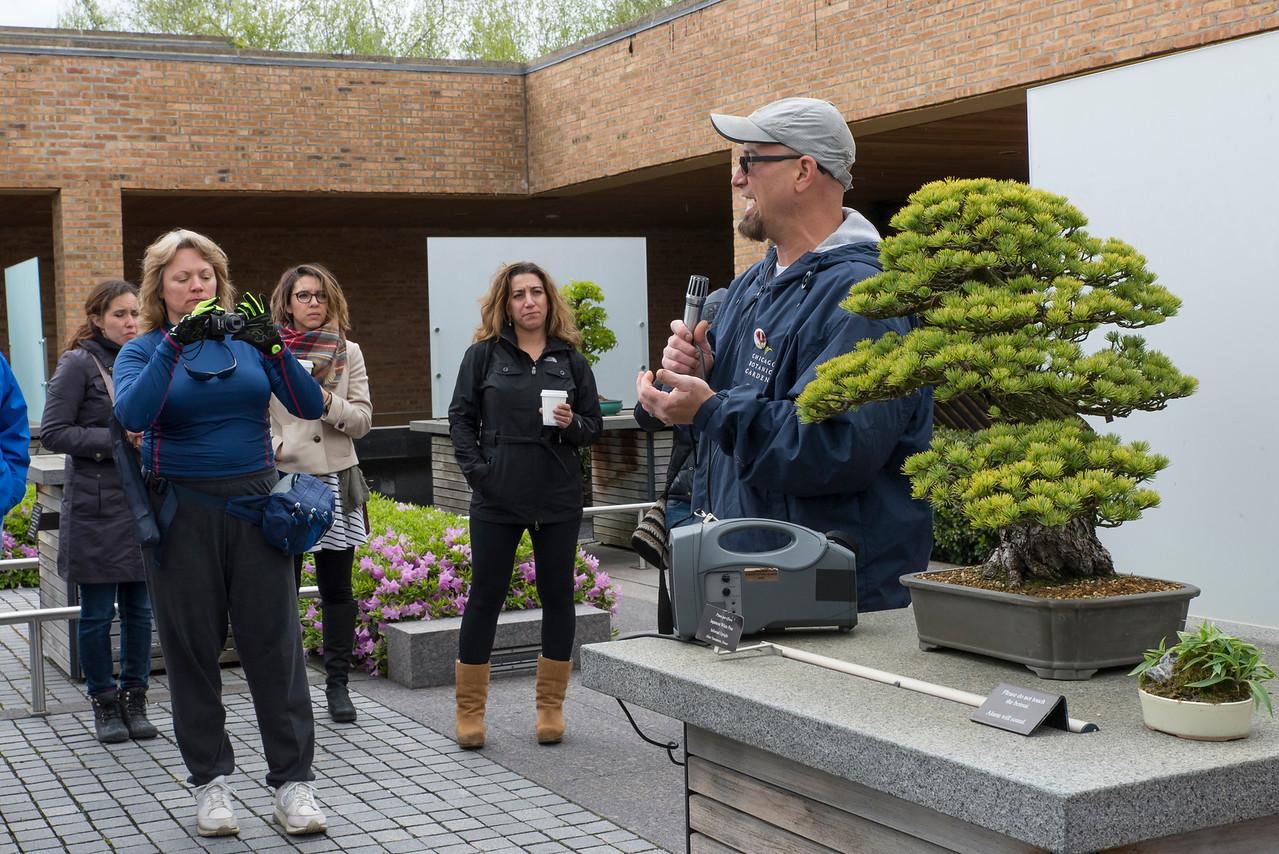 Chris Baker wants to expose more people to bonsai, to let them see as many forms of the art as possible. Photo: Chicago Botanic Photos
Chris Baker wants to expose more people to bonsai, to let them see as many forms of the art as possible. Photo: Chicago Botanic Photos
If someone living in the Chicago area wanted to try cultivating a bonsai, for instance, Baker teaches classes, and the Midwest Bonsai Society Show has starter bonsai available for purchase. For the beginner, Baker recommends evaluating your resources beforehand to choose the right tree: how much light it would get, how much time you have to take care of it, what’s the climate like. If you have outdoor space, juniper, maple, and elms are forgiving, he says; if the bonsai would be indoors, you need a tropical tree like a ficus.
“People don’t view bonsai as attainable, they see it as daunting,” Baker says. “But you can do it. I don’t want people to walk through our collection and look at bonsai as some sort of anomaly. I want to engage them, to expose them to as many different styles and forms of the art as possible.”

